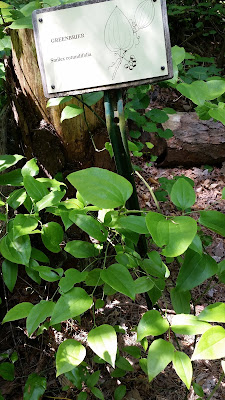I learned about Lost Acres a few years ago, but we never got to go on their exploration weekends. Luckily a friend of ours decided to book a field trip to the facility and it worked in our schedule.
The field trip began with the Pledge of Allegiance and a brief overview of the facility and what was on the agenda. The program is run by volunteers that are older ladies and gentlemen. They come from all walks of life and take pride in teaching and sharing the natural world with the kids.
Our first stop of the tour happened to be skulls and skins. The lesson focused mainly on animals local to the area. Some of the skins we had seen before, but there were several new skins we had not seen close up. They also had skins of animals not in the area that were nice to look at. Little Man liked the shark jaws.
Next, we went on a nature hike. We learned many interesting facts along the hike. Our guide pointed out different vines, trees, shrubs, ground cover, ferns, mosses, etc. The wooded trail is very nice and easy to walk. There is so much to see and take in during the walk. We even saw a lizard!
Muscadine vines
Blueberry bushes
Lizard
Virginia creeper
Poison Ivy
Sassafras
American Holly
Burl on Poplar Tree
Ebony Spleenwort Fern
Cane
Rattlesnake plant
Huge White Oak
Netted Chain Fern
Cinnamon Fern
Greenbriar
Lycopodium
Once we finished the nature walk, the hosts showed the children a gun safety video. Basically, it reinforced to 'if you find a gun, leave it alone and get a grown up.' The video is aimed for a k5 to 2nd grade child.
After the video, the group got to build blue bird houses. These are very nice and will last for years. They had a great time building them. Once finished with the houses, they learned about various types of birds and their songs. We were told about how long ago people thought barn owls were ghosts. After hearing the call of the barn owl, it is easy to understand why.
This was a very nice field trip. We are so glad we finally got to visit Lost Acres and plan on returning soon.




























































